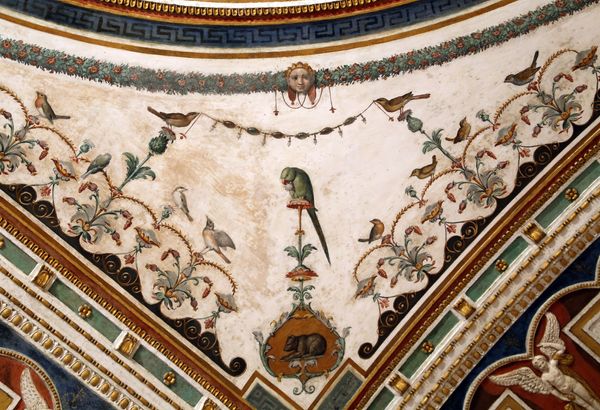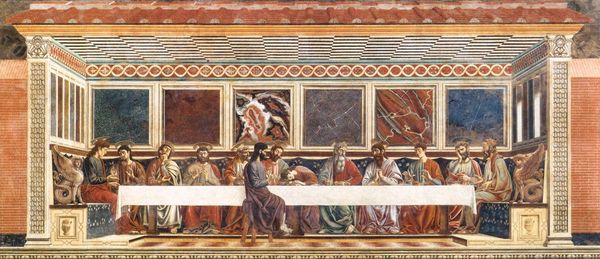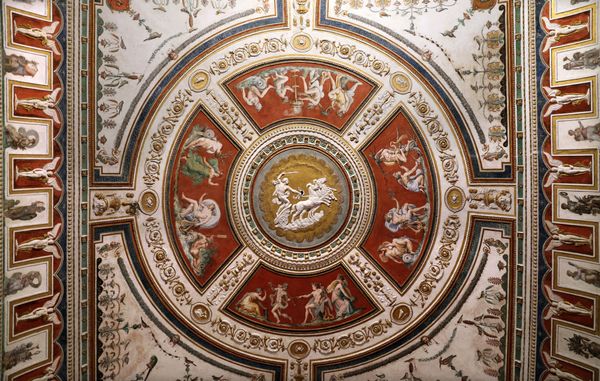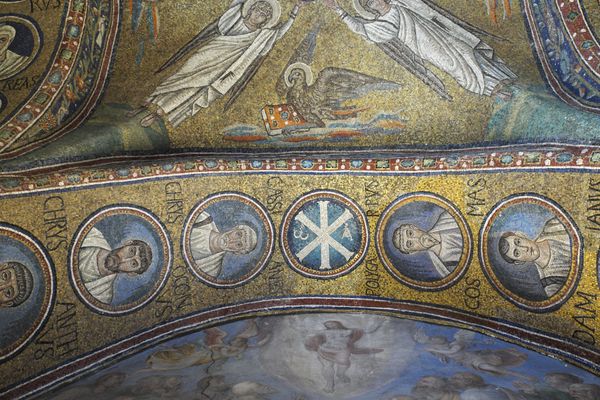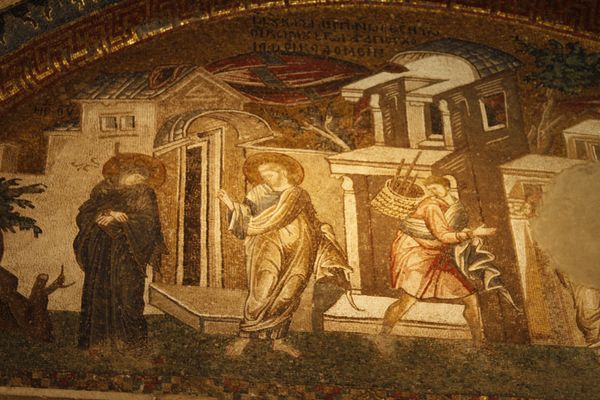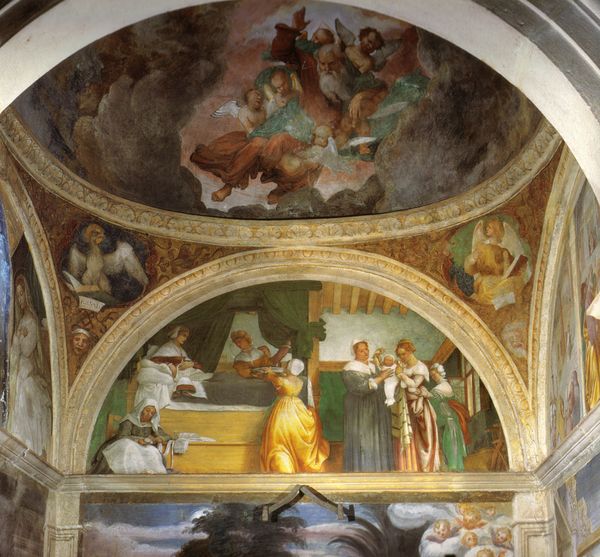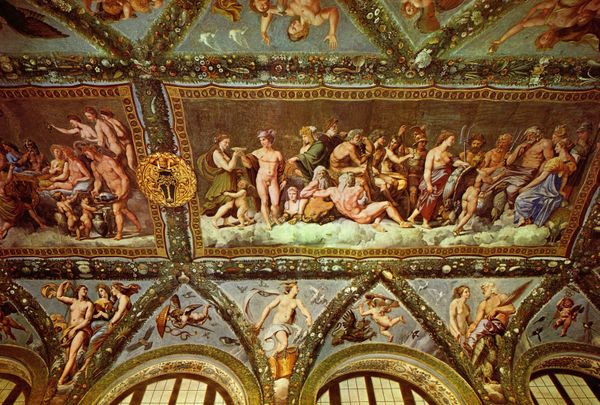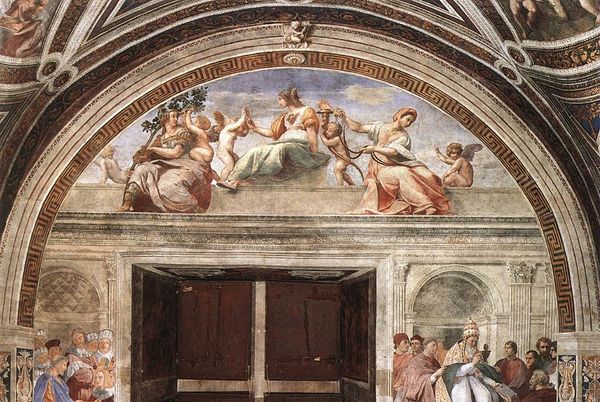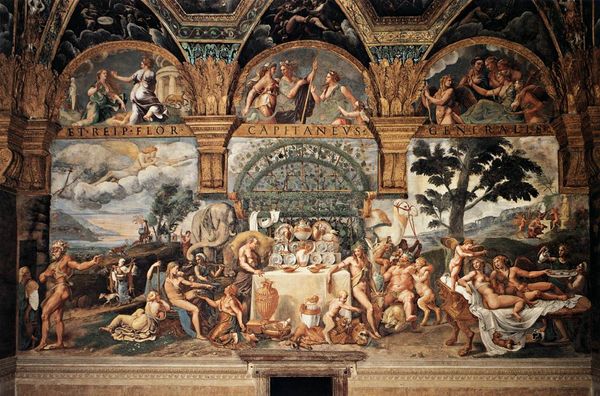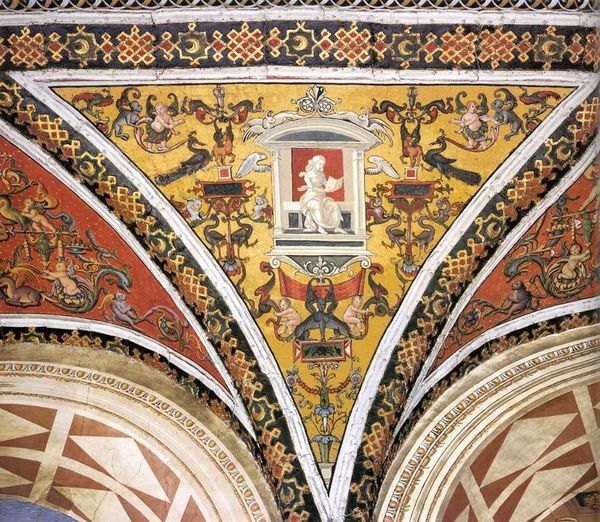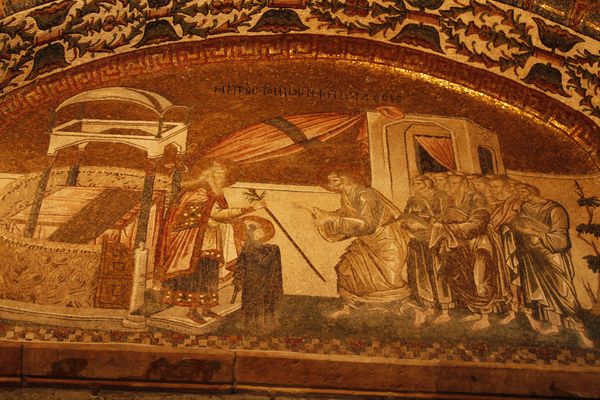
Stanza Di Apollo 1540
0:00
0:00
francescoderossifrancescosalviaticecchino
Palazzo Grimani di Santa Maria Formosa, Venice, Italy
tempera, painting, fresco, mural
#
allegory
#
tempera
#
painting
#
holy-places
#
figuration
#
cultural heritage
#
historic architecture
#
form
#
fresco
#
traditional architecture
#
classicism
#
line
#
history-painting
#
academic-art
#
italian-renaissance
#
mural
#
historical building
Copyright: Public domain
Curator: Here, in the Palazzo Grimani in Venice, we are face to face with Francesco Salviati's "Stanza di Apollo," dating back to around 1540. Take a moment to consider the fresco. Editor: It feels deliberately cool, somehow distant. All those defined lines separating compartments... It's like peering at something beautiful but untouchable. Like glimpsing at an old, yet carefully maintained, architectural drawing. Curator: Salviati, or Cecchino as he was known, employed tempera grassa, or what’s sometimes called “fat tempera,” to produce an extremely smooth fresco surface. That could account for the visual coolness you feel, stemming from a highly polished technique. It’s also a showcase of classicism’s revival, look at how the artist uses the mural to reference the art and architectural structures that mark much of our western heritage. Editor: The framing is particularly interesting—each painted scene has a sort of window frame painted around it, and these are bordered with what looks like three-dimensional sculptures of youthful angels holding them up... It seems like the frescoes within the frames are held within multiple layers of other realities or visions. Curator: Absolutely. Think about the labor that goes into this too: the mining of pigments, the grinding, the precise application by workshops of artisans… and all of it contributing to representing an allegory and history-painting style in such elaborate detail. This "Stanza di Apollo" isn't just a picture; it’s a layered cultural and economic object that connects the artistic process directly to the historical building. Editor: Makes you wonder about the room's original function. Imagine these cool, almost austere decorations overlooking daily life. What conversations echoed in this space? What rituals did these serene figures observe? Curator: Precisely! These frescoes bring our attention to how we view historical buildings today and invite us to reconsider its origins from a lens focused on its art style and overall design. It provokes further pondering, from our own point of view as viewers who observe and take it all in. Editor: So, from just looking at the work—"Stanza di Apollo," its coolness is now warmed up with a whole new level of fascinating questions!
Comments
No comments
Be the first to comment and join the conversation on the ultimate creative platform.

